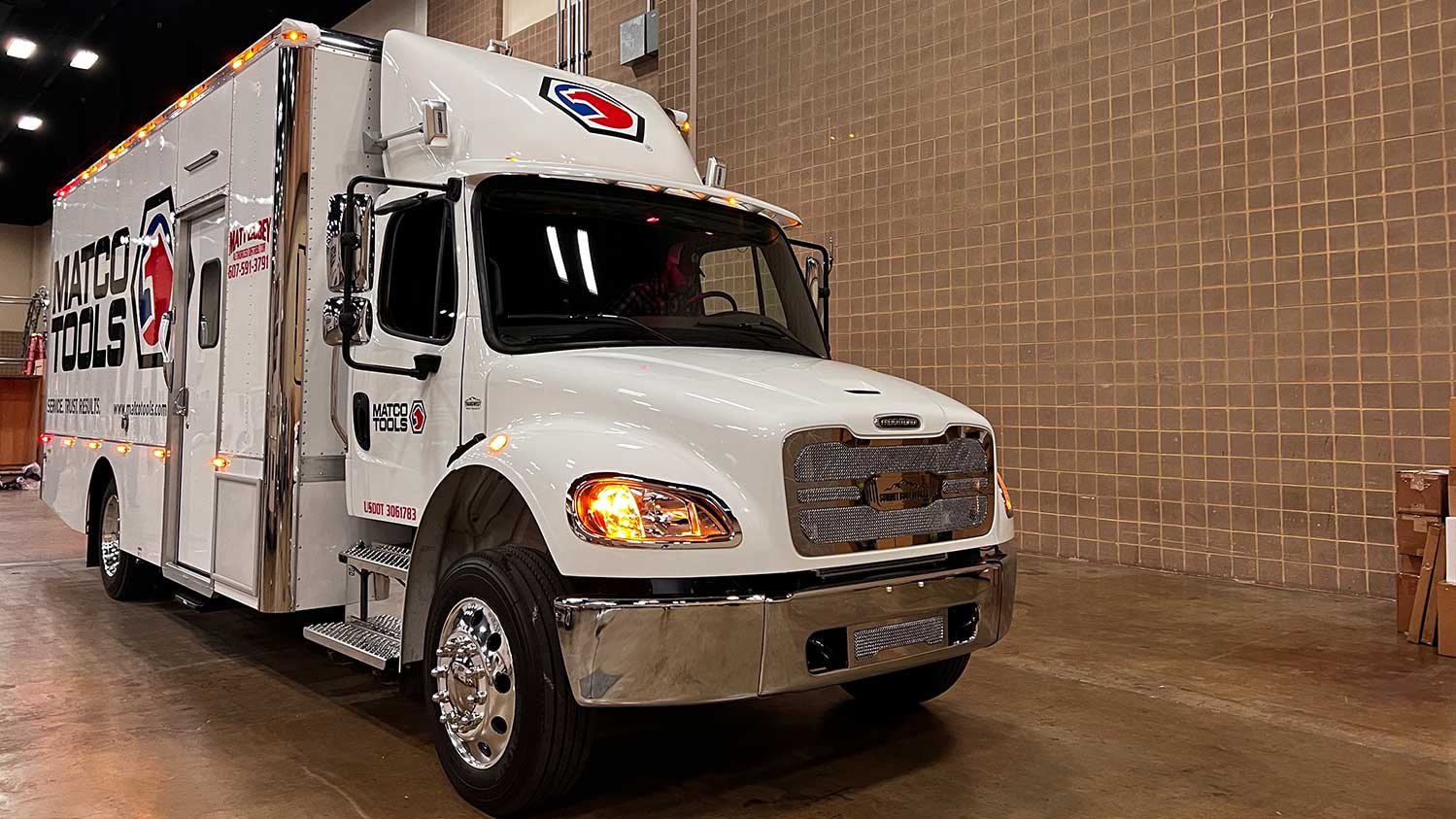What types of trucks are used as tool trucks?
Our tool trucks come in three different chassis styles. A cab chassis on a Freightliner M2 is the most popular. Other options include Ford, Kenworth, Peterbilt, Hino, Isuzu, and International chassis. Ordinarily, these are constructed with 18-foot to 26-foot bodies that do not require a CDL.
Another common choice, step vans come in either a Ford or Freightliner chassis, and you can choose between a gas or diesel model. Our highly detailed and well-built step vans come in 18-foot to 24-foot body options with a locking bulkhead sliding door for store security.
Finally, tilt cabs are another option from Isuzu and Hino, with body sizes available from 16 feet to 22 feet. This style is well suited for smaller, urban areas where it may be more difficult to maneuver. We will work with you to create options and designs to make every inch of the body count.
How large is a typical tool truck?
Standard tool trucks typically come in 20, 22, 24, and 26-foot body options. At Summit Bodyworks, our tool trucks range from 16 to 28 feet in length. We offer cab chassis, step vans, and tilt cabs. Our smaller Tilt cabs range in sizes from 16 to 22 feet, making them ideal for situations where gas efficiency and navigation are important. Our step vans are available in 18- to 24-foot lengths, and cab chassis is our largest option, ranging from 18 to 28 feet.
When choosing a size for your tool truck, you want to choose one that has enough room to fit your tools and grow with your business, but it should not have empty space.
If the route you drive on is located in an urban area, a smaller body size may be best, while a rural route may call for a larger truck with space for customers.
What options are available on a tool truck?
Many tool truck dealers and distributors add on options such as floodlights, external storage boxes, roll-away shelving units, floor tie-down rings, an RV refrigerator, and a sliding walkthrough door. Other popular options include a 12-volt testing panel at the service desk, aluminum floors in toolbox pockets, diamond plate toe kicks, custom sunglass, and beef jerky displays, and generators.
A reputable tool truck distributor will offer a wide range of accessories. This allows tool truck owners to choose the right combination to supplement their business. Adding the right options to a tool truck can go a long way toward improving customer satisfaction, as well as increasing the owner’s comfort and ease of use. Owners spend a great deal of time in their trucks, and it is important to have the ability to choose the right add-ons for their business goals, customer needs, and location.
Do tool truck drivers have to purchase their own trucks?
Yes, most tool truck drivers must purchase their own trucks — also known as a mobile franchise or mobile store — even if they are driving a branded vehicle for a particular tool company. They may work for themselves as an independent distributor or drive as a distributor for a popular tool company such as Cornwell Tools, Mac Tools, or Matco Tools.
Driving and owning a tool truck has many benefits. Tool truck drivers work for themselves, and they have the flexibility to set their own hours and control their own income. Working for an established tool franchise can give drivers access to a network of national brands, specialized rewards programs, business and marketing support, and top-quality products. Owning a truck also eliminates the need to purchase a traditional storefront. Because real estate can be expensive to purchase and maintain, this makes operating a tool franchise an attractive option for many aspiring business owners.
Does a tool truck driver need a CDL?
A tool truck driver will need a CDL if their truck has a gross vehicle weight rating (GVWR) of 26,001 pounds or more. Many tool trucks fall just below this limit, at 26,000 pounds. However, if a driver purchases a tool truck that is above the required GVWR, they are required to hold a CDL.
CDL requirements are outlined on both the federal and state level. The Federal Motor Carriers Safety Administration (FMCSA) lays out the federal requirements which are applicable across the United States. CDLs, however, are not issued by the federal government, so you must go to your state’s DMV for this license. For your state’s guidelines, check with your state’s department of transportation (DOT) and on your state’s official government website. Even if you are driving across state lines, you should hold a CDL in your home state.






























